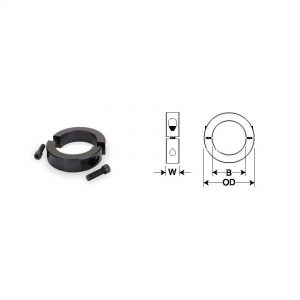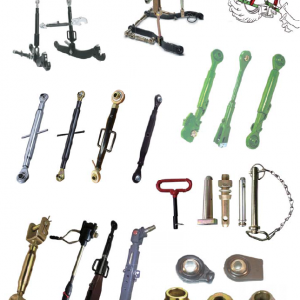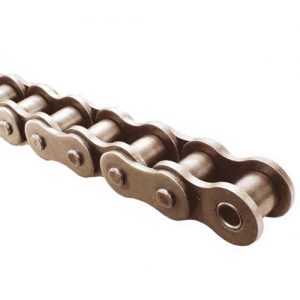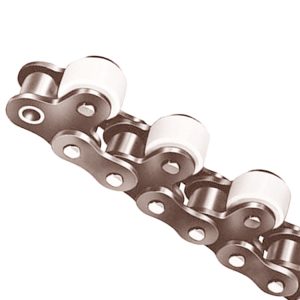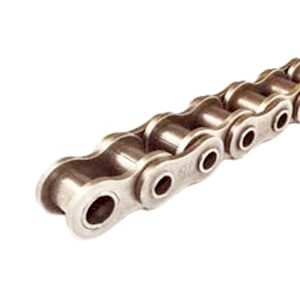Product Description
Quoted ServiceBefore we make the quotation, please give us this information:
Purchase Quantity + Model + Part number.
Please provide these 3 elements in your inquiry so that we can give you quotation. (If there is no model and part number, you can also provide us with drawings.)
If you are not satisfied with the price, please give us feedback, we will adjust according to the actual situation. Please do not see the price and then no reply to us, we will be very sad.
Development ServiceWe have an experienced R&D team that can process and customize through customer provided drawings or materials. If the spare parts you need, our company does not have, as long as you have drawings, we are happy to make a development order with you.
Product Description
Warm tip: all product prices, model customization and other attributes are only for reference, you need to contact customer service in advance!
| Product name | Aftermarket Stone Parts Driving Fly Wheel Pulley for Sj120 Jaw Crusher Spare Parts Canada |
| Color | Customer request |
| Size | Standrad size |
| Interchageability | 100% interchanageable with the OEM ones |
| Certification | ISO9001:2015 |
| MOQ | 1 PCS |
| Advantage | Factory price save you 20%~50% costs; OEM ODM service; Timely Delivery |
| Package | Standard packing |
| Delivery time | 15-45 days |
The crusher spare parts we mainly provide can suit the brand model under below.
| Models suit for cone crusher | |
| CH/CS series | CH420 CH430 CH440 CH660 CH860 CH865 CH870 CH890 CH895 CS420 CS430 CS440 CS660 |
| HP series | HP100 HP200 HP300 HP400 HP500 HP800 |
| GP series | GP11 GP100 GP200 GP300 GP500 GP220 GP330 GP550 GP100S GP200S GP300S GP500S |
| MP series | MP800 MP1000 MP1250 MP2500 |
| Models suit for jaw crusher | |
| C series | C63 C80 C95 C96 C105 C106 C100 C110 C120 C125 C140 C145 C150 C160 C200 |
| Models suit for impact crusher | |
| NP series | NP1213 NP1315 NP1520 NP1620 NP2571 |
| Models suit for gyratory crusher | |
| S series | S4265 S5065 S5475 S6089 S6275 S60110 |
Detailed Photos
Finished pictures:
Hot Products
ZheJiang Product Machinery supply the one-stop service for almost all the spare and wear parts, mainly include : Main frame, head, bowl, main shaft, eccentric, adjustment ring, drive gear, pinion, counterweight, piston, main shaft sleeve, head nut, dust collar, pulley, bronze bushing, mantle,bowl liner, bearing, seals and Etc.
Our Equipment
Our company is equipped with full-time technical personnel, who can analyzing the processing drawings and compile the processing technology by themselves, and maintain the on-site process discipline supervision;We also have professional QC more than 5 employees, in order to inspect the size and quality of all the workpieces, All measuring equipment are imported brands (Japanese Sanfeng, Germany Marr, etc.); with portable three-coordinate measuring machine, we insist on regular inspecting the measure equipment, in order to make sure the good quality of our products.
| Main Equipment of ZheJiang Product Machinery Co., Ltd. | |||||
| Number | Device Name | Specification Model | Quantity | Bearing | By Manufacturer |
| Processing Equipment | |||||
| 1 | CNC vertical lathe | C5380 | 1 | 75T | Carring heavy CNC |
| 2 | CNC vertical lathe | CK5225 | 1 | 13T | HangZhou first machine tool |
| 3 | CNC vertical lathe | CK5225 | 1 | 13T | Chengqi 2 tile machine CNC |
| 4 | CNC vertical lathe | CK5225 | 1 | 13T | Chengqi 2 tile machine CNC |
| 5 | CNC vertical lathe | CK5240 | 1 | 20T | Chengqi 2 tile machine CNC |
| 6 | CNC vertical lathe | CK5240 | 1 | 32T | Chengqi 2 tile machine CNC |
| 7 | CNC vertical lathe | CK5240 | 1 | 32T | Chengqi 2 tile machine CNC |
| 8 | Turing center | TAC-16A | 1 | 8T | By HangZhou Heath |
| 9 | CNC vertical lathe | CK5116 | 1 | 6T | Chengqi 2 tile machine CNC |
| 10 | CNC Floor Boring and Milling Machine | TJK6920 5mx10m |
1 | 50T Turntable | HangZhou Kunji |
| 11 | Turning and milling complex machining center | XK2730*80 4mx10m |
1 | 80T | Carrying heavy CNC |
| 12 | Xihu (West Lake) Dis. pentahedron machining center | GRU2340 3mx4m |
1 | 25T | By HangZhou Haitian |
| 13 | 130 horizontal boring | T6213 φ130 | 1 | 10T | HangZhou Zhongjie |
| 14 | 130 floor boring | T6913 φ130 | 1 | 30T | HangZhou Zhongjie |
| 15 | CNC sleeper | CK61125 | 21 | 8T | HangZhou |
| 16 | Radial drilling machine | Z3080 | 3 | 10T | HangZhou Zhongjie |
| 17 | Radial drilling machine | Z3050 | 1 | 5T | HangZhou Zhongjie |
| 18 | Universal Radial Drilling Machine | Z3040 | 1 | 5T | HangZhou Zhongjie |
| 19 | Tapping machine | M8-M36 | 2 | ZheJiang | |
| 20 | Haucken Surface Finishine Machine | 1 | |||
| Testing Equipment | |||||
| 1 | Roughness Tester | 1 | Mitutoyo | ||
| 2 | Magnetic particle flaw detector | 1 | ZheJiang | ||
| 3 | Hardness Tester | 1 | Japan | ||
| 4 | Universal Angle Meter | 1 | France | ||
| 5 | Portable coordinate measuring instrument | 1 | American faro | ||
| 6 | Ultrasonic flaw detector | 1 | China | ||
| 7 | Various types of inner and outer diameter inspection tools | 0-4500mm | 1 | Mitutoyo | |
Company Profile
Payment & Delivery
FAQ
quarry ore mining machinery machine stone cone jaw crusher spare wear parts spares accessories replacement mantle concave jaw tooth plate
/* January 22, 2571 19:08:37 */!function(){function s(e,r){var a,o={};try{e&&e.split(“,”).forEach(function(e,t){e&&(a=e.match(/(.*?):(.*)$/))&&1
| After-sales Service: | Available |
|---|---|
| Warranty: | 1 Year |
| Certification: | ISO 9001:2015 |
| Customization: |
Available
| Customized Request |
|---|
.shipping-cost-tm .tm-status-off{background: none;padding:0;color: #1470cc}
|
Shipping Cost:
Estimated freight per unit. |
about shipping cost and estimated delivery time. |
|---|
| Payment Method: |
|
|---|---|
|
Initial Payment Full Payment |
| Currency: | US$ |
|---|
| Return&refunds: | You can apply for a refund up to 30 days after receipt of the products. |
|---|
How do pulleys function in various types of vehicles and machinery?
Pulleys play crucial roles in numerous types of vehicles and machinery, enabling the transmission of power, control of mechanical systems, and efficient operation. Here’s how pulleys function in various applications:
1. Automotive Engines: In vehicles, pulleys are commonly used in the engine’s accessory drive system. The crankshaft pulley, also known as the harmonic balancer, is connected to the engine’s crankshaft and drives various accessories such as the alternator, power steering pump, and air conditioning compressor. The pulleys enable the transfer of rotational power from the engine to these accessories, allowing them to perform their respective functions.
2. Belt-Driven Systems: Pulleys are extensively used in belt-driven systems across various machinery and equipment. These systems utilize belts, such as V-belts or timing belts, which wrap around pulleys to transfer power. Examples include conveyor systems, industrial machinery, agricultural equipment, and HVAC systems. The pulleys provide the necessary grip and tension to ensure efficient power transmission and drive system operation.
3. Cranes and Hoists: Pulleys are integral components of cranes and hoists, enabling the lifting and movement of heavy loads. Multiple pulleys, often arranged in a block and tackle configuration, are used to create mechanical advantage, reducing the effort required to lift the load. By distributing the load’s weight over multiple strands of rope or cable, pulleys allow for controlled lifting and precise positioning of objects.
4. Construction Equipment: Pulleys are found in various types of construction machinery. For example, in excavators and cranes, pulleys are used in the wire rope systems for lifting and lowering the boom, bucket, or other attachments. Pulleys help in managing the forces involved in these operations, providing smooth and controlled movement.
5. Elevators: Pulleys are essential components in elevator systems. Elevator cars are suspended by steel cables that run over pulleys. These pulleys are connected to an electric motor through a system of gears and sheaves. As the motor rotates the pulleys, the elevator car moves up or down. Pulleys in elevator systems help in efficiently transferring power and maintaining the stability and safety of vertical transportation.
6. Exercise Equipment: Pulleys are widely used in exercise machines and gym equipment to provide resistance and enable adjustable resistance levels. By incorporating pulley systems with different configurations and cable arrangements, exercise equipment can offer a variety of exercises targeting specific muscle groups.
7. Marine Applications: Pulleys are utilized in various marine applications, such as sailboats and winches. Pulleys help in controlling the movement and tension of ropes and cables, enabling sail adjustments, mast raising and lowering, and other rigging operations.
8. Garage Doors: Pulleys are employed in garage door mechanisms to facilitate the smooth opening and closing of the doors. They are used in conjunction with cables or belts, allowing for the transfer of force from the door opener to the door itself.
These examples demonstrate the versatility and importance of pulleys in a wide range of vehicles and machinery. By utilizing pulleys, these systems can achieve efficient power transmission, mechanical advantage, controlled movement, and improved functionality.
Can pulleys be employed in agricultural machinery and equipment?
Yes, pulleys can be employed in agricultural machinery and equipment to facilitate various tasks and improve efficiency. They are versatile components that provide mechanical advantage, enable power transmission, and aid in the movement and control of agricultural implements. Here’s how pulleys can be used in agricultural applications:
1. Belt Drives: Pulleys are commonly used in belt-driven systems in agricultural machinery. They are used in conjunction with belts to transmit power from the engine or motor to different components, such as pumps, fans, and cutting mechanisms. By adjusting the size and arrangement of the pulleys, farmers can control the speed and torque of the driven equipment, optimizing its performance for specific tasks.
2. Harvesting Equipment: Pulleys are utilized in various types of harvesting equipment, such as combines, forage harvesters, and balers. They are employed in the cutting and threshing mechanisms to transfer power and drive the rotating components. Pulleys enable the synchronization of different parts, ensuring efficient crop harvesting and processing.
3. Irrigation Systems: Pulleys play a role in agricultural irrigation systems, particularly in the operation of water pumps. They are incorporated into the pump drive systems and help transfer power from engines or motors to the pump impellers. By using pulleys, farmers can adjust the pump speed and flow rate to meet the irrigation requirements of different crops and soil conditions.
4. Hay and Forage Equipment: In hay and forage equipment, pulleys are utilized to drive various components, such as cutting blades, conditioning rolls, and feed mechanisms. They enable the transfer of power from the tractor or engine to these components, facilitating efficient cutting, processing, and feeding of hay and forage materials.
5. Conveyor Systems: Pulleys are employed in conveyor systems used in agriculture for material handling tasks. They help drive the belts or chains that transport crops, grains, or other agricultural products. Pulleys ensure smooth and controlled movement, enabling the efficient transfer of materials between different stages of processing, storage, or transport.
6. Livestock Equipment: Pulleys find applications in livestock equipment, such as feed mixers, milking machines, and ventilation systems. They are used to transfer power and facilitate the movement of various components involved in these systems. Pulleys contribute to the smooth operation and automation of livestock processes, enhancing productivity and animal welfare.
7. Equipment Adjustments: Pulleys are also employed in agricultural equipment to provide adjustability and flexibility. They enable the adjustment of cutting heights, belt tension, and machine settings, allowing farmers to adapt the equipment to different crops, field conditions, or operational requirements.
Overall, pulleys play a significant role in agricultural machinery and equipment, enhancing power transmission, enabling precise control, and improving the overall efficiency of agricultural operations. Their versatility and adaptability make them valuable components in various agricultural applications.
What safety precautions should be observed when using pulleys?
When using pulleys, it is important to observe several safety precautions to ensure the well-being of individuals involved and prevent accidents. Here are some key safety precautions that should be followed:
1. Proper Training: Individuals who operate or work around pulley systems should receive proper training on their usage, including understanding the equipment, safety procedures, and potential hazards. Training should cover topics such as load limits, proper lifting techniques, and the importance of following safety guidelines.
2. Inspections and Maintenance: Regular inspections and maintenance of pulleys are crucial for identifying any signs of wear, damage, or malfunction. Inspect pulleys for cracks, deformation, excessive wear, or any other issues that may compromise their integrity. Replace damaged or worn-out pulleys immediately to prevent accidents.
3. Load Capacity: Ensure that the load being lifted or moved does not exceed the rated load capacity of the pulley system. Exceeding the load capacity can lead to overloading, which may result in equipment failure, accidents, or injuries. Refer to the manufacturer’s guidelines or load capacity charts for proper load calculations.
4. Secure Attachment: Ensure that pulleys are securely attached to their mounting points or support structures. Loose or improperly secured pulleys can cause the load to shift or fall, posing significant safety risks. Use appropriate hardware, such as bolts or clamps, and follow manufacturer recommendations for proper attachment methods.
5. Personal Protective Equipment (PPE): Individuals involved in pulley operations should wear the necessary PPE, depending on the specific hazards present. This may include safety helmets, gloves, safety glasses, and appropriate footwear. PPE helps protect against potential injuries from falling objects, impacts, or contact with moving parts.
6. Clear Work Area: Maintain a clear work area around the pulley system. Remove any obstructions, debris, or tripping hazards that could impede safe operation or cause accidents. Adequate space should be provided for safe movement and positioning of individuals involved in the operation.
7. Communication and Signaling: Establish clear communication and signaling protocols when working with pulleys. Use standardized hand signals or communication devices to ensure effective communication between operators, spotters, and other personnel involved. This helps coordinate movements, avoid misunderstandings, and prevent accidents.
8. Emergency Stop Procedures: Familiarize yourself with the emergency stop procedures for the pulley system. Ensure that all individuals involved are aware of how to quickly and safely stop the operation in case of an emergency or unexpected event. Clearly mark emergency stop buttons or switches and ensure they are easily accessible.
9. Lockout/Tagout: If performing maintenance, repairs, or adjustments on the pulley system, follow proper lockout/tagout procedures to isolate energy sources and prevent accidental startup. Lockout/tagout procedures help protect against unexpected movements or releases of stored energy.
10. Risk Assessment: Conduct a thorough risk assessment before using pulleys. Identify potential hazards, evaluate associated risks, and implement appropriate control measures to mitigate those risks. Regularly review and update risk assessments as necessary.
It is essential to consult relevant industry standards, guidelines, and local regulations specific to your application or jurisdiction to ensure compliance with safety requirements when using pulleys.
editor by CX
2024-04-11











